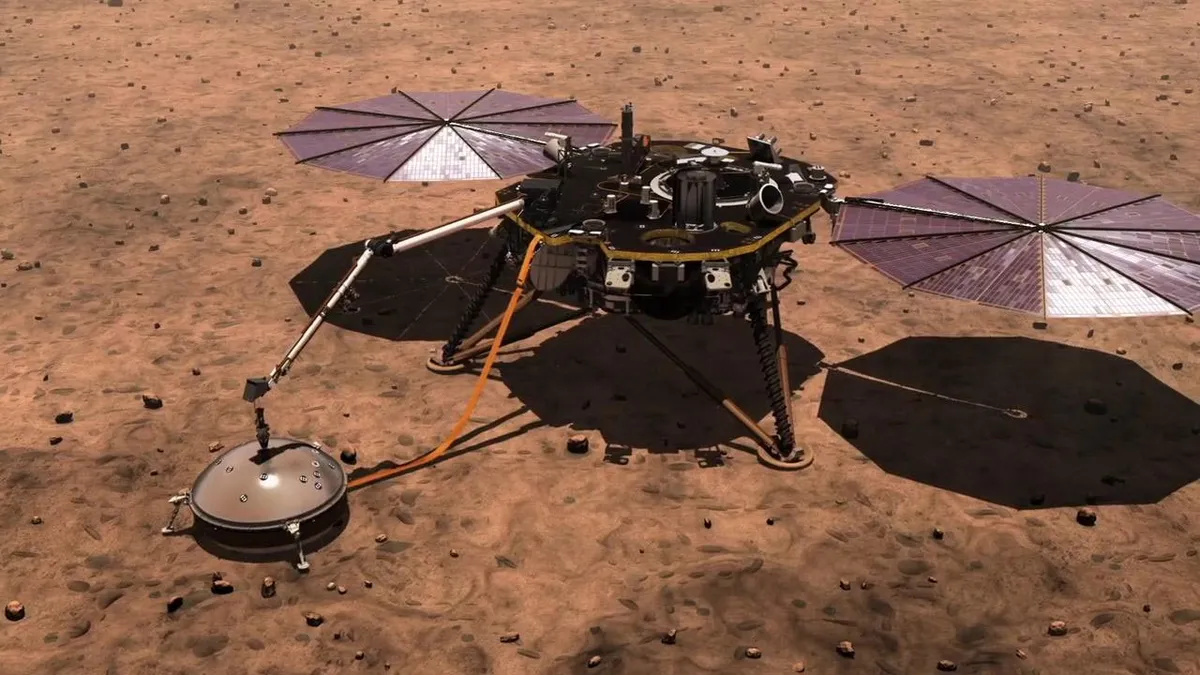
Recent seismic data collected by NASA’s InSight lander indicates that there may be liquid water hidden beneath the surface of Mars, raising exciting possibilities for the existence of microbial life in the planet's subsurface. In a groundbreaking study led by Ikuo Katayama from Hiroshima University and Yuya Akamatsu from the Research Institute for Marine Geodynamics, the researchers propose that this subterranean water could support life forms, even in the harsh Martian environment.
“If liquid water exists on Mars,” Katayama states, “the presence of microbial activity is possible.” This pivotal assertion is based on an in-depth analysis of data collected by SEIS (Seismic Experiment for Interior Structure), an advanced instrument deployed by NASA’s InSight lander upon its arrival on Mars in 2018. Notably, InSight was the first mission to place a seismometer directly onto the Martian surface using its robotic arm, allowing for unprecedented seismic monitoring.
The SEIS instrument detects seismic waves produced by natural events like Marsquakes and meteorite impacts. These waves are categorized into three types: P-waves, S-waves, and surface waves. By analyzing how these waves travel through the planet, scientists can infer critical information about Mars' internal structure, including the possible existence of water.
P-waves and S-waves provide valuable insights into the characteristics of Martian rocks, such as their density and composition. Notably, S-waves cannot traverse water, and they move at a slower speed compared to P-waves. This difference allows researchers to determine subsurface conditions based on the presence or absence of S-waves and their travel times. Additionally, P-waves travel faster through denser materials, enabling scientists to assess variations in density within the Martian crust.
The seismic data gathered by SEIS shows distinct boundaries at depths of 10 km and 20 km, indicated by variations in seismic velocity. While these boundaries were previously thought to represent sharp transitions in porosity or chemical composition, Katayama and Akamatsu suggest they may instead indicate the presence of water-filled cracks in the Martian subsurface.
To validate their hypothesis, Katayama and Akamatsu conducted laboratory experiments measuring the seismic velocity of rocks that mimic the typical composition of the Martian crust under varying conditions—wet, dry, and frozen. The Martian rocks they studied are comparable to diabase rocks found in Rydaholm, Sweden, known for their evenly sized plagioclase and orthopyroxene grains.
Utilizing a piezoelectric transducer as a wave source, the researchers monitored seismic wave energy in these diabase samples. Their findings revealed significant differences in seismic velocities across the dry, wet, and frozen samples, supporting the idea that the identified boundaries at 10 km and 20 km depths reflect a transition from dry rock to wet rock rather than a mere change in porosity or chemical composition.
The results of this study provide compelling evidence for the existence of liquid water beneath the surface of Mars. “Many studies suggest the presence of water on ancient Mars billions of years ago,” Katayama explains, “but our model indicates the presence of liquid water on present-day Mars.” This finding not only enhances our understanding of Mars' geological history but also opens new avenues for exploring the potential for life beyond Earth.